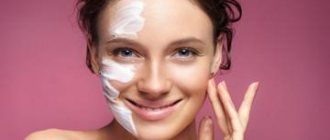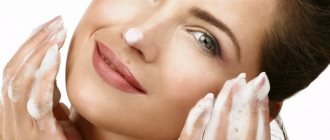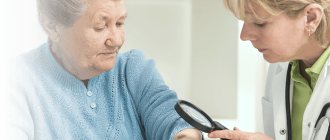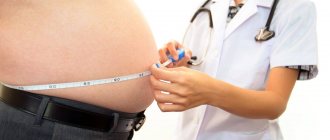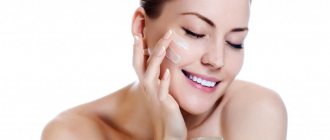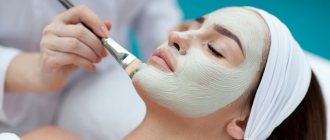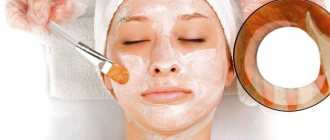Cosmetologist YULIANA SHIYAN: Acne in a teenager is considered common, although any diagnosis, including “simple acne,” should not be considered the norm. Moreover, the calm attitude of adults towards a rash on a teenager’s face does not make life easier for the child; this does not make his self-esteem higher, nor does his anxiety decrease. And if you notice that the child once again does not go out with friends and stays at home at every opportunity, then pay attention to this; this is hardly a normal desire to do homework.
For acne in teenagers, a variety of remedies are used:
- Azelaic acid
- Antibiotics, external and systemic, for example erythromycin, clindamycin
- Zinc preparations (internally and externally)
- Benzoyl peroxide
- Retinoids (internally and externally)
There is now a lot of information in the public domain about how to get rid of acne for a teenager. Buying ointment at a pharmacy is not a problem at all; advertisements for all kinds of zinerites and basirons are a dime a dozen. The main thing for parents in this flow of information and availability of medications is not to slip into self-medication.
Each of the drugs listed is good, and it seems that now we’ll buy it, apply it and we’ll have clear skin. But in fact, each drug has many nuances in use, for pustules one, for blockages another, for irritated skin a third. Most of them require supplementation for strengthening or reinsurance so that resistance (stability) of the flora does not form.
They have a side effect that is either considered normal or requires immediate cancellation. When and how to add oral medications to external treatment, and whether acne is purely teenage acne or requires additional specialists are separate questions. It is impossible to determine all this on your own and there is simply no knowledge. Therefore, you need to contact me and sign up for a consultation.
Features of teenage facial skin
Teenage skin has a number of features that distinguish it from adult skin.
Adolescence is from 10 to 19 years, that is, the moment of puberty and several years before and after it. From about 11-12 years old, serious changes begin in the child’s body. They manifest themselves in the active growth of bones, muscles, development of the brain hemispheres, and puberty. The child's appearance changes. From 11 to 16 years of age, hormonal changes occur and testosterone levels soar. This applies to teenagers of both sexes, but boys to a greater extent.
Due to hormonal fluctuations, the work of the sebaceous and sweat glands increases. The teenager actively sweats, and the sweat develops a pungent odor. Hair quickly becomes dirty. As for the skin on your face, it becomes oily. Pores become prone to blockage and enlargement. All this provokes the formation of pimples, blackheads, blackheads and other inflammations.
Along with such changes, complexes appear on the face. Rashes and redness look repulsive, and children begin to feel embarrassed about their face, withdraw into themselves, and become less sociable.
The activity of the rash varies, up to a continuous, pathological covering of the face. And vice versa, they may not exist at all. Several factors can aggravate the problem:
- Stress.
When a person is nervous, his body produces the hormone cortisol. It stimulates the active functioning of the sebaceous glands, which is why acne appears. - Diseases of the gastrointestinal tract.
- Poor nutrition.
Abuse of sweets and fatty foods, spicy foods. Snacking instead of full, balanced meals throughout the day. - Lack of proper skin care.
Teenagers simply do not yet have the skills for facial hygiene, and then immediately they have problematic skin! - Weakened immunity.
- Exposure to sunlight.
In warm weather, acne appears more actively on the face. This is explained by an increase in sebum production under the influence of high temperature. The problem is aggravated by mixing sebum with cosmetics. - Poor quality cosmetics.
This includes skin care products and decorative cosmetics. Often both contain harmful chemicals.
Types of masks
At home, you can prepare effective formulations from fresh natural ingredients that can cleanse, soothe, tighten pores, and reduce the production of sebaceous secretions.
Anti-inflammatory
A popular homemade mixture includes aloe, honey and chamomile. It can have a pronounced anti-inflammatory effect, cleanse and soften. Does not cause allergies unless there is an individual intolerance to bee honey. Masks from Polysorb and other pharmaceutical products also work well to remove inflammation.
Preparation:
- 2 fleshy aloe leaves are placed in the freezer for 3 hours.
- Grind in a blender, add 1 tsp. liquid honey.
- Enter 2 tbsp. l. decoction of chamomile, stir and heat in a water bath to 30°C.
- Apply and leave for 20 minutes, rinse off.
Failure to follow prescription instructions may result in a reduction in the effect of the mask.
Drying
They will help with excessive secretion of sebaceous glands, remove oily shine, and cleanse pores. Recommended for oily types. For dry skin, a drying composition is prescribed by a dermatologist according to strict indications. Most masks for oily skin at home help to cope with rashes.
Preparation:
- 1 tbsp. l. low-fat yogurt and cottage cheese are mixed.
- Add 3-4 drops of lemon juice and mix.
- Apply and leave for 15 minutes, rinse.
If well tolerated, the time can be increased to 20-25 minutes.
Moisturizing
For normal functioning, the teenage dermis requires hydration. Recommended for dry and combination types. For acne, you can also try masks with castor oil and other oils.
Step-by-step preparation:
- Fresh cucumber is peeled and chopped in a blender.
- 1 tbsp. l. The cucumber mixture is mixed with 5-7 drops of olive oil.
- Apply to face and leave for 20-25 minutes.
- Wash off with warm mineral water.
Cleansing
A homemade mixture of dry yeast and lemon juice will cleanse pores, eliminate acne, and relieve irritation and redness. Will help cope with age spots. If this mask does not give the desired effect, then you should try other masks with lemon and other citrus fruits.
Step-by-step description of preparation:
- 7-10 g of dry baker's yeast is poured with a small amount of warm water and left for 30 minutes until completely dissolved.
- Enter 1 tsp. fresh lemon juice.
- Lubricate the dermis, leave for 20 minutes, and wash off.
Daily skin care for teenagers
Having become teenagers, many people begin to take care of their facial skin simply because it begins to bother them. But even if there are no problems with your skin, it’s time to start taking care of it like an adult, that is, every day. Gone are the days when, in case of dryness and irritation, the skin was smeared with baby cream, and before going out into the cold - with winter protection.
Experts say that adolescence is the right time to learn the basic rules of daily care. The body is ready for this. It is believed that the epidermis is fully formed around the age of 11. And already at the age of 13-14, it is recommended to take care of your skin every day, master basic care adjusted for youth. The daily ritual, which is preferably carried out in the morning and evening, includes three main stages of facial skin care:
- Cleansing.
For teenagers, this is the most important stage. In the morning and evening, you should wash your face with a mild cleanser. It is advisable to use filtered or boiled water. And the best way to avoid contact with hard and chlorinated tap water is to replace traditional washing with gel or foam with hydrolates. These are plant distillates that you just need to wipe your face to thoroughly cleanse it of fat, bacteria, and makeup. It's an added bonus if the cleanser is soothing.High-quality cleansing, by the way, is important for those who use special acne products. In order for the substances to be absorbed and begin to act, the face must be clean. In the case of problem skin, the cleanser should have an anti-inflammatory effect, and here special hydrolates will again come to the rescue: sage and mint.
For severe acne, some recommend products containing salicylic, glycolic acids, and retinol, but it is better to consult a specialist. Rough scrubs are not considered at all.
- Toning.
Many people neglect this stage, but in vain. Treatment of the face with tonic promotes deeper cleansing and restoration of the acid-base balance. And if there are problems, then a well-chosen toner will help relieve redness and inflammation, reduce the size of acne, cleanse and tighten pores. Just beware of products containing alcohol and aggressive ingredients! Contrary to popular misconception, alcohol does not remove fat, but only provokes its more active production. - Hydration.
Yes, now the skin needs regular moisturizing. Even if she's fat, that doesn't mean she can't become dehydrated. A person loses moisture every day while doing everyday activities. The face should be moisturized morning and evening, especially after contact with water. In the evening, you can even apply a light nourishing composition, just not an overloaded age option.
In addition to the three stages of basic, daily skin care for a teenager, there is also special, local care designed to solve specific problems: acne cream, strips for blackheads, and the like.
Children's skin (from 0 to 10-12 years):
Thin and vulnerable, it does not protect as well as adult skin from germs and toxins.
Care:
Timely cleansing and protection from adverse factors. Children's cosmetics should include natural plant extracts (chamomile, calendula, string, aloe) and oils (almond, jojoba), panthenol, zinc oxide. Thanks to these components, baby care cosmetics protect the child from an aggressive microbial environment, moisturize and soothe.
How can a teenager achieve perfect facial skin?
If a teenager does not have the standard youthful set of skin problems, then it is already ideal: elastic, delicate, fresh. What distinguishes young skin from adult skin is that it is denser, more elastic, heals quickly, and has a healthy color with a blush. You just need to maintain it in this state. And if, after all, acne, blackheads and inflammation have not passed, you can strive for the ideal, reducing problems and preventing new ones.
Basic rules for perfect skin:
- Follow the daily cleansing-toning-washing ritual, taking into account your skin type and, if necessary, use local products for pimples, blackheads, and blackheads.
- To drink a lot of water. At school, the child is subjected to serious mental stress, and in physical education lessons he is also physically tired. Water is a must! You can put a bottle of water in a student’s briefcase. Not juices and lemonades, but regular drinking water. For the beauty of the dermis, it is important to remove waste and toxins from the body, and for this you need water.
- Eat properly. The diet should be balanced in the composition of fats, proteins and carbohydrates, and contain vitamins and microelements. It is advisable to eat fruits and vegetables every day, avoid fatty foods, fast food and quick snacks.
- Exercise.
- Minimize the use of decorative cosmetics.
Tips for caring for a teenager's skin
There are also nuances, knowledge of which will help in the fight against acne in adolescence. Recommended:
- Change your pillowcase at least 2 times a week. Dust accumulates on it and bacteria appear, which negatively affect the skin.
- Use disposable paper napkins to wipe your face, not terry towels.
- Absolutely avoid covering active acne with foundation! It's better to use a correction pencil.
- Before going out into the sun, use protective cream.
- You can wipe your face with a regular ice cube wrapped in a cloth. Ice reduces swelling and redness in the area of rashes, narrows the pores, and therefore reduces the risk of their clogging or the penetration of bacteria and infections due to the enlarged condition.
- You should take a contrast or warm shower every day, it tones the skin.
Age 35-45 years:
Noticeable changes in the skin around the eyes, excess skin around the eyelids, and swelling of the eyelids appear. Neck skin – the first wrinkles and folds appear, and with excess weight and a “double chin”, the depth and expressiveness of the nasolabial folds increases, and the oval of the face changes.
However, all these changes are quantitative, not qualitative. Therefore, with proper cosmetic care, a woman’s appearance may not differ much from her photographs ten years ago.
Professional care includes: laser facial rejuvenation, micro-resurfacing, biorevitalization, non-injection mesotherapy, superficial peelings, the use of botulinum toxin, various professional masks: collagen, alginate, as well as non-surgical face lifting, ligature lifting, contour plastic surgery.
Home care must be regular: proper cleansing of the skin, the use of active serums, anti-aging creams, creams and masks around the eyes, and the mandatory use of masks in home care.
Differences in facial skin care for boys and girls
Girls begin to take care of their faces from an early age, and boys often neglect care as a “non-male” procedure that they were not accustomed to and which can cause condemnation from their peers.
Moreover, most often it is boys who need special care. During adolescence, they produce significantly more testosterone. Accordingly, the skin is oilier than that of girls. The number and size of acne are greater. Also, by the end of puberty, facial hair begins to appear, which means the beginning of shaving, which has a negative effect on the skin, causes irritation, and is accompanied by constant damage to the skin.
The most difficult task is to convince the boy to use care products. We must try to convey to him the idea that acne is a natural stage of growing up, and you need to go through it competently.
Age 45-55 years:
The changes characteristic of the previous period are increasing and aggravating. In addition, many women experience problems related to hormonal status, for example, hair growth on the upper lip. Microcirculatory disorders lead to vascular manifestations - rosacea, spider veins, telangiectasias.
During this period, in addition to regular professional and home care, a consultation with a gynecologist-endocrinologist is required to determine the hormonal status and the possibility of its correction. Anti-aging drip infusions are also relevant, with the correction of microcirculatory disorders, restoration of liver function, and antioxidant effects.
Skin care for teenage girls
In girls, the occurrence of acne is often associated with menstruation, and they are characterized by cyclicity. As already mentioned, these rashes are not as intense as in boys.
Girls are beginning to take care of their skin more willingly. And if you start using decorative cosmetics, then you need to prepare the dermis for its application and wash it off properly at the end of the day. Cleansing and moisturizing the skin in the morning and evening has already been mentioned. What can I add?
It is recommended to wash your face as soon as you wake up. During the night, sweat and excess sebum accumulated on the face. Cool water (preferably filtered or distilled) will tone the skin and remove oily shine. The dermis will become matte. Wash without soap.
Before leaving the house, it is better to apply balm to your lips to prevent them from looking chapped.
During the day, you do not need to touch your face with your hands. It is best to carry matting wipes with you, they help a lot.
Parental example is contagious
Taking care of your skin should start from childhood. First, it's up to the parents. The baby's skin is delicate, thin, sensitive and not yet fully formed - there is no protective properties of the lipid layer, and the sebaceous glands do not produce enough fat secretion for hydration and elasticity. Therefore, it is necessary to choose skin care cosmetics with an infant index that moisturizes, nourishes, and fights irritation, hypersensitivity and diaper rash.
As the child grows up, the role of the parents' personal example increases. The child reads how mom and dad take care of themselves and then reproduces them in their independent life. Ideally, by entering adolescence, a person should already have basic caregiving skills. But here problems begin that require a special approach - inflammation, blackheads and pimples.
Article on the topic
Do not do that! 6 ways that definitely won't save you from acne
Caring for oily teenage skin
Oily skin type is the most difficult for a teenager. The sebaceous glands work very actively, so even after frequent washing, the face continues to shine. The pores are enlarged, the skin is covered with pimples and blackheads.
Be sure to cleanse your skin morning and evening. Do not squeeze pimples. Make up is minimal. It is recommended to have mild exfoliators in your arsenal. It is useful to make natural masks: based on clay, lemon juice, egg white and other ingredients.
Inflamed elements can be treated with salicylic acid or another special agent. You should be careful with special lotions and tonics for problem skin, which reduce the secretion of the sebaceous glands and prevent inflammation. It is important not to overdo it and beware of alcohol in their composition.
Oily skin is not the same as moisturized skin. It also loses moisture, so it needs to be moisturized. So you should choose products that would mattify and moisturize at the same time.
What other effective medications for acne are there that can be used at home?
Not only masks, but also tinctures help against acne. They wipe problem areas of the skin. The most effective is chamomile tincture. You will need 1 teaspoon of dried chamomile.
- pour a glass of boiling water;
- leave for 30 minutes;
- strain.
Potato juice helps with abscesses on the face. It is mixed with aloe juice in a 2:1 ratio and wiped over the face in the morning.
Care for combination skin of a teenager
Combination skin type is the most common. The T-zone and chin show signs of oily dermis, while the remaining areas are normal or dry. Owners of such skin have to deal with all the same problems as in the case of oily skin, but at the same time they also have to intensively moisturize and soften flaky areas.
So the arsenal of funds will be larger, and their use will be zoned. Tightening and cleansing masks should only be applied to the T-zone, and for dry areas it is better to choose nourishing and moisturizing masks.
Prices
The cost of treating acne in adolescents depends on the treatment method and the amount of work.
Thus, ozone therapy for the face and chin costs 3,500 rubles, laser treatment for acne will cost 400 rubles. per flash (the more flashes, the lower the cost of one flash), peelings cost from 5,000 rubles, cleaning 5,000 rubles, and so on. You will receive accurate information about the cost of treatment at a free consultation with a cosmetologist. Make an appointment by phone +7 (499) 137-00-00 Call, the clinic administrator will help you choose a convenient day and time for your appointment.
